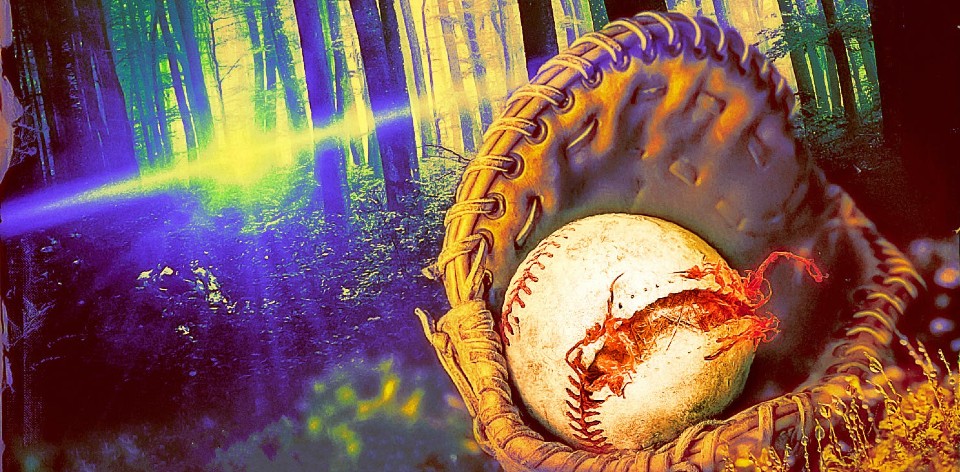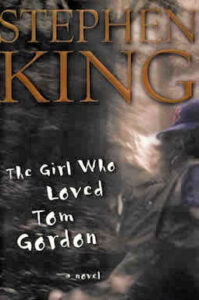Welcome back to Inconstant Reader, the feature column that explores Stephen King’s books in the order they were published — sort of! Here a proud baseball fan explores faith through an unconventional thriller.
WARNING: The girl also liked to spoil plot points.
In 1998, Tom “Flash” Gordon was a closing pitcher for the Boston Red Sox. It was the year that the team won the American League wild card. In the same period, Gordon had set a club record with 43 consecutive saves. Gordon was so popular in Boston that New England neighbour and Sox superfan Stephen King quite literally deified him in print.
The slender tome follows the nine-year-old Trisha, separated from her family while hiking along a portion of the Appalachian Trail. Conserving what little food she has, Trisha gets increasingly lost when she tumbles off the main path. With only her Walkman to keep her company, her hunger and thirst lead to hallucinations. Some of these are in her mind, but it’s possible there’s something else in the woods as well.
If this sounds vaguely familiar, it’s probably because there’s shades of some earlier King in there. While some may point to The Body, the 1982 novella that became the film Stand By Me (1986), there’s some weird parallels with Gerald’s Game, published only six years earlier. Both deal with the inner world of a young girl experiencing trauma, and while Gerald’s Game has some decidedly adult content, both play with the ambiguity of things seen in extreme isolation.
Like that earlier book, the main hallucination is both figurative and literal. As the title of the book would imply, Trisha’s hero is Tom Gordon. He begins to appear to her by way of encouragement. Yet she’s also convinced that she’s seeing the God of the Lost, a wasp-faced entity that seeks to claim her for itself. Ambiguous for much of the novel, she ultimately encounters a bear on the outskirts of civilisation. She believes it to be a manifestation of the God of the Lost, but riddled with pneumonia as she is, we’re left with answers far less tangible than the ‘Space Cowboy’ from Gerald’s Game.
The other parallel can be found, strangely enough, in Desperation (1996). In that book, there was a young boy who seemed to have a direct conversation with God, something that sustained his faith for the duration of an ordeal. While Trish’s god is not quite of the capital G variety, and may be entirely in her head, the end product is the same. It’s about faith in something to sustain you through the bad times. (Those came months after the release of this book King, when he was involved in a severe car accident). Which is probably why baseball was a logical thematic fit for King. Here the chapter headings mirror the innings of a ballgame, almost acting like the stations of the cross for young Trish.
King’s faith in the game would later see him publish the short story ‘A Face in the Crowd’ and his fan exploration of the 2004 Sox season in Faithful (both with Stewart O’Nan). These weren’t the first times, or the last, that King would write about baseball either. The essay ‘Head Down’ (1990), originally published in the for New Yorker followed the a season of his son Owen’s little league team. When it was republished in Nightmares & Dreamscapes, it was accompanied by the baseball-themed poem ‘Brooklyn August.’ Seriously: the man owned a sport-talk radio station.
King would continue to explore baseball in more detail with the novella Blockade Billy in 2010, and remains a vocal fan to this day. His local paper the Bangor Daily News speaks proudly of how he and his wife Tabitha’s support for local teams has sustained the community. THE GIRL WHO LOVED TOM GORDON is ultimately a thriller about faith and survival, and how far this nine-year-old mind can be pushed before breaking. As a Chicago Cubs fan, I can relate.
When it returns in 2022, Inconstant Reader will dive deep into King’s process with Secret Windows: Essays and Fiction on the Craft of Writing. While you’re in the mood, go check out Batrock.net, where my buddy Alex Doenau is running through this Stephen King adventure with me.






